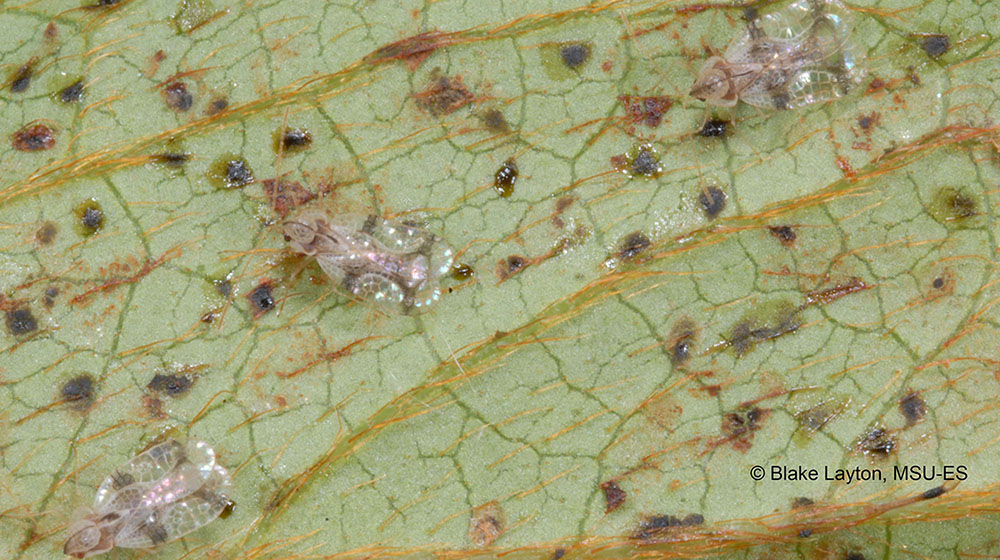Azalea Lace Bugs, No 5
Related News
June 4, 2015
May 19, 2015
May 15, 2015
May 5, 2015
April 24, 2015

Stephanitis pyrioides
That planting of azaleas is not looking too good; the leaves look bleached or bronze colored. What’s wrong with them? Take a close look at the undersides of the leaves and you will probably find azalea lace bugs. These insects overwinter as eggs, but even during the winter, when no insects are present, the diagnostic dark fecal deposits persist on the undersides of leaves. This photo shows three adult lace bugs, which are about 3/16 inches long, and many fecal spots.
Lace bugs are the most common insect pests of azaleas throughout the South. You can find some lace bugs on almost any untreated azalea. Damaging infestations are less common but are not hard to find. Some varieties are more susceptible than others, and heavy lace bug infestations are more likely to occur on plants growing in full sun. Severe infestations cause plants to be unsightly and unthrifty.
Control: For fast-acting control of heavy lace bug infestations, spray with a foliar applied systemic insecticide such as acephate ((Bonide Systemic Insect Control) or imidacloprid + cyfluthrin (Bayer Complete Insect Killer)). For long-lasting preventive control, use a soil-applied systemic treatment such as imidacloprid (Bayer Tree and Shrub Insect Control) or dinotefuran (Greenlight Tree and Shrub Insect Control). For best control of severe infestations do both; spray with acephate and apply a soil treatment of imidacloprid or dinotefuran.
See Extension Publication 2369, Insect Pests of Ornamental Plants in the Home Landscape, page 17 and pages 35-36 for more information.
Blake Layton, Extension Entomology Specialist, Mississippi State University Extension Service.
The information given here is for educational purposes only. Always read and follow current label directions. Specific commercial products are mentioned as examples only and reference to specific products or trade names is made with the understanding that no discrimination is intended to other products that may also be suitable and appropriately labeled.